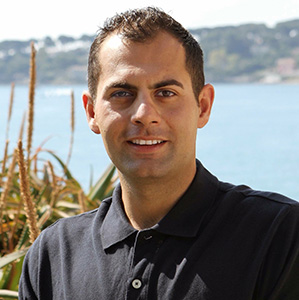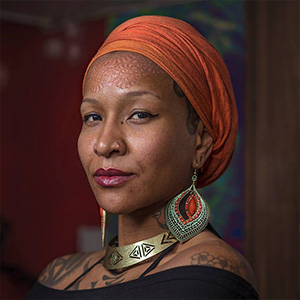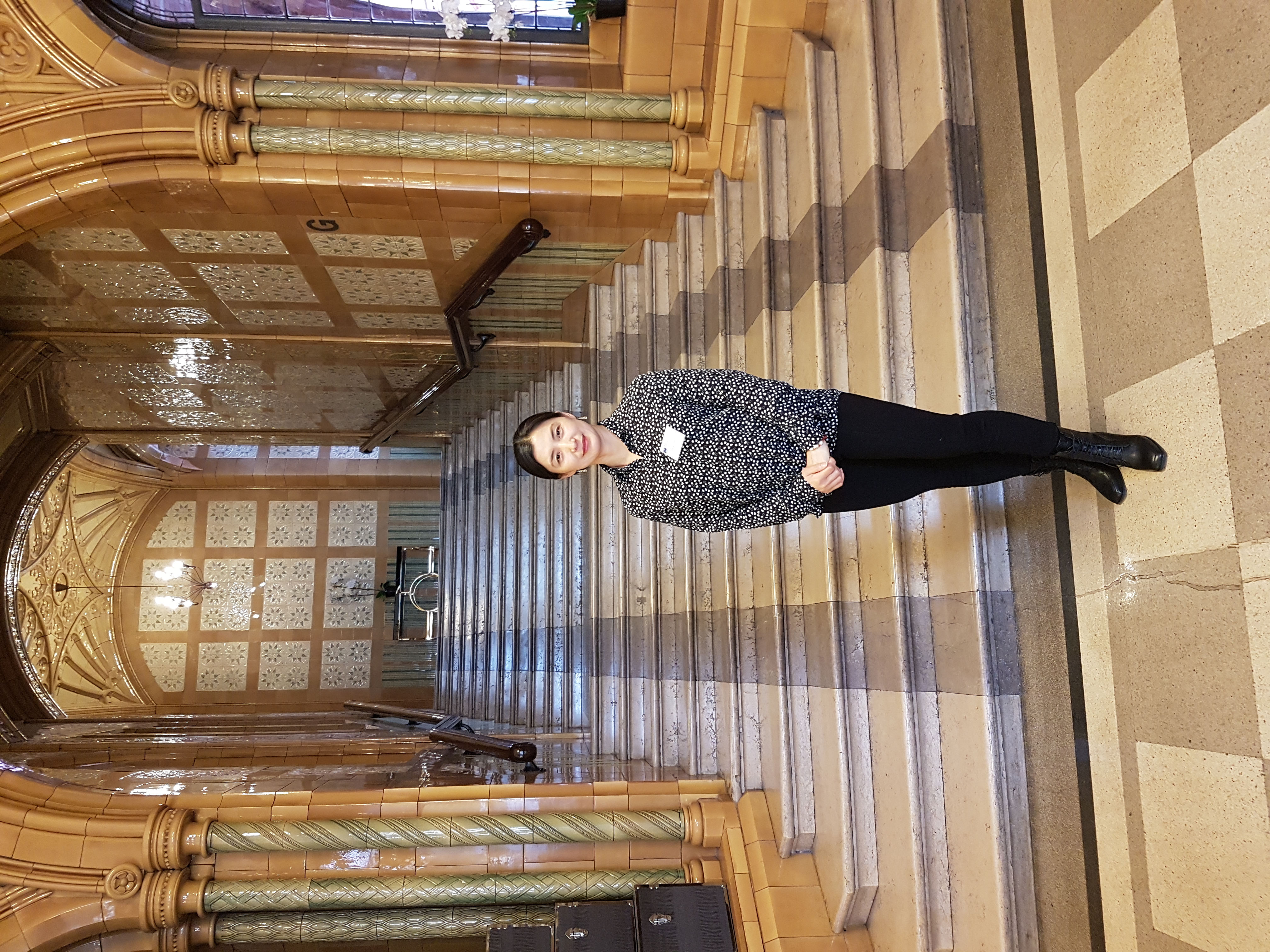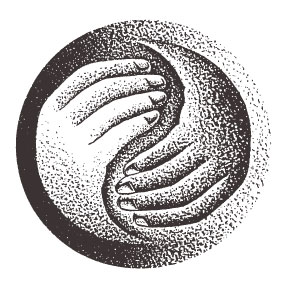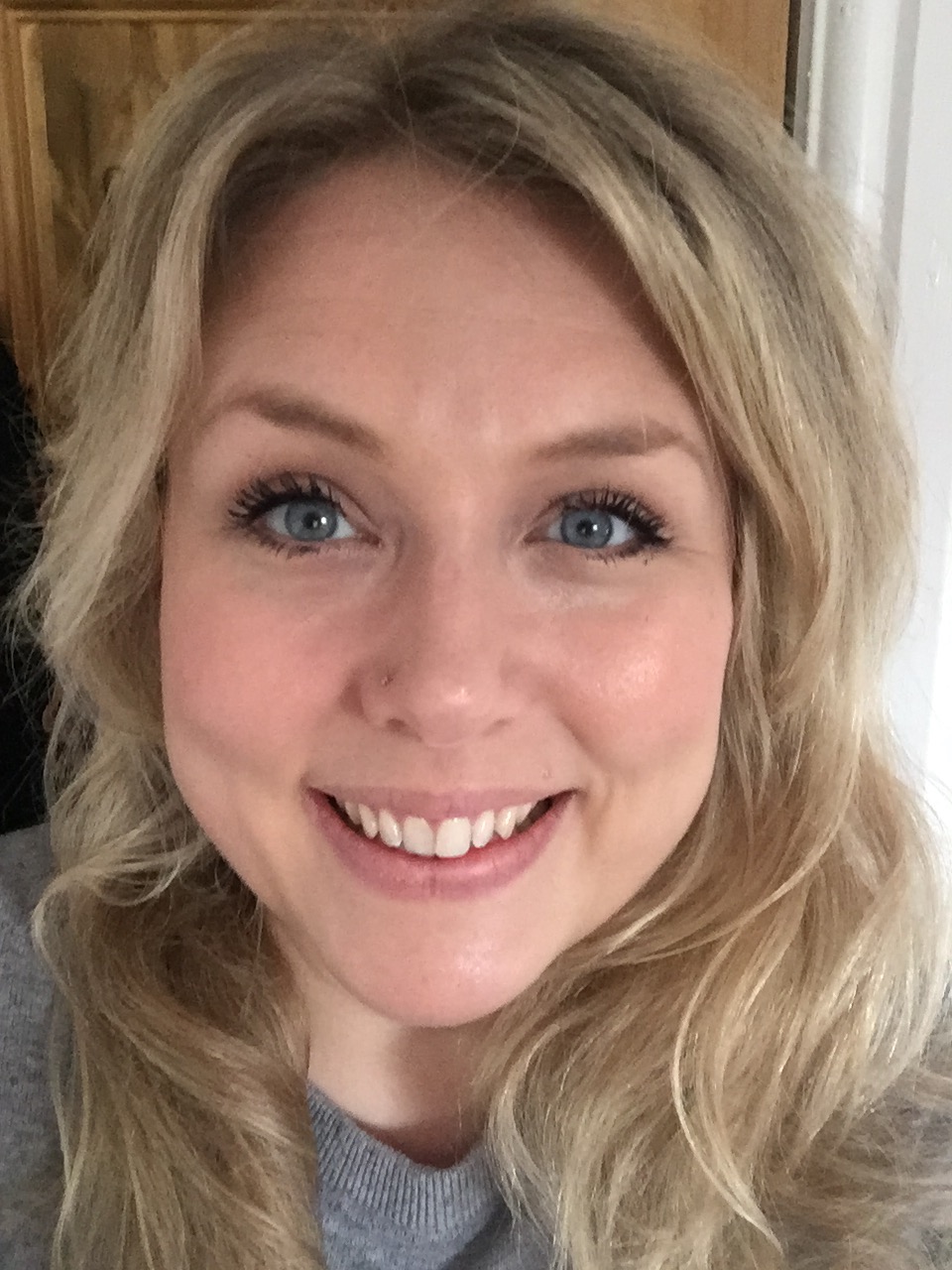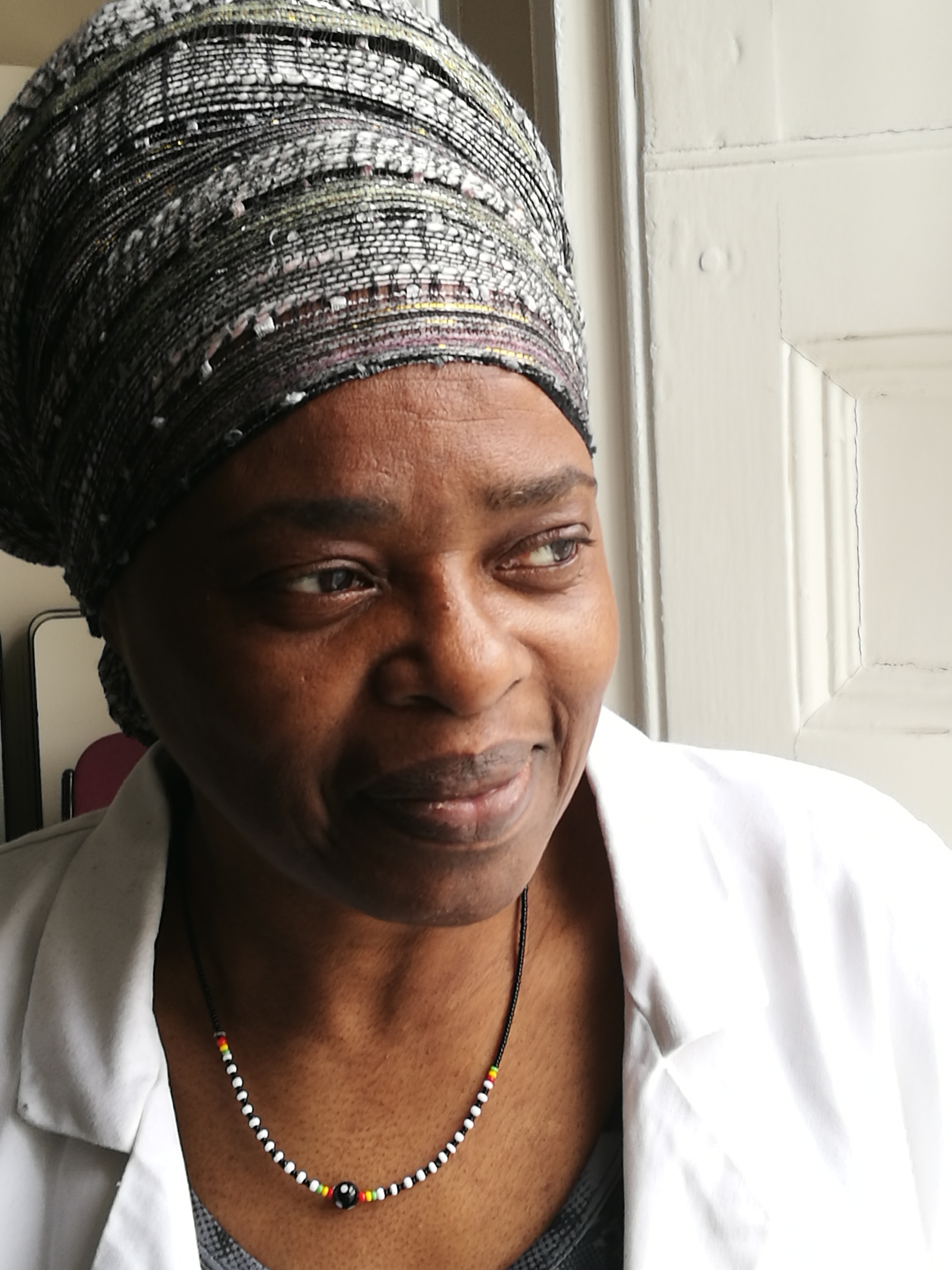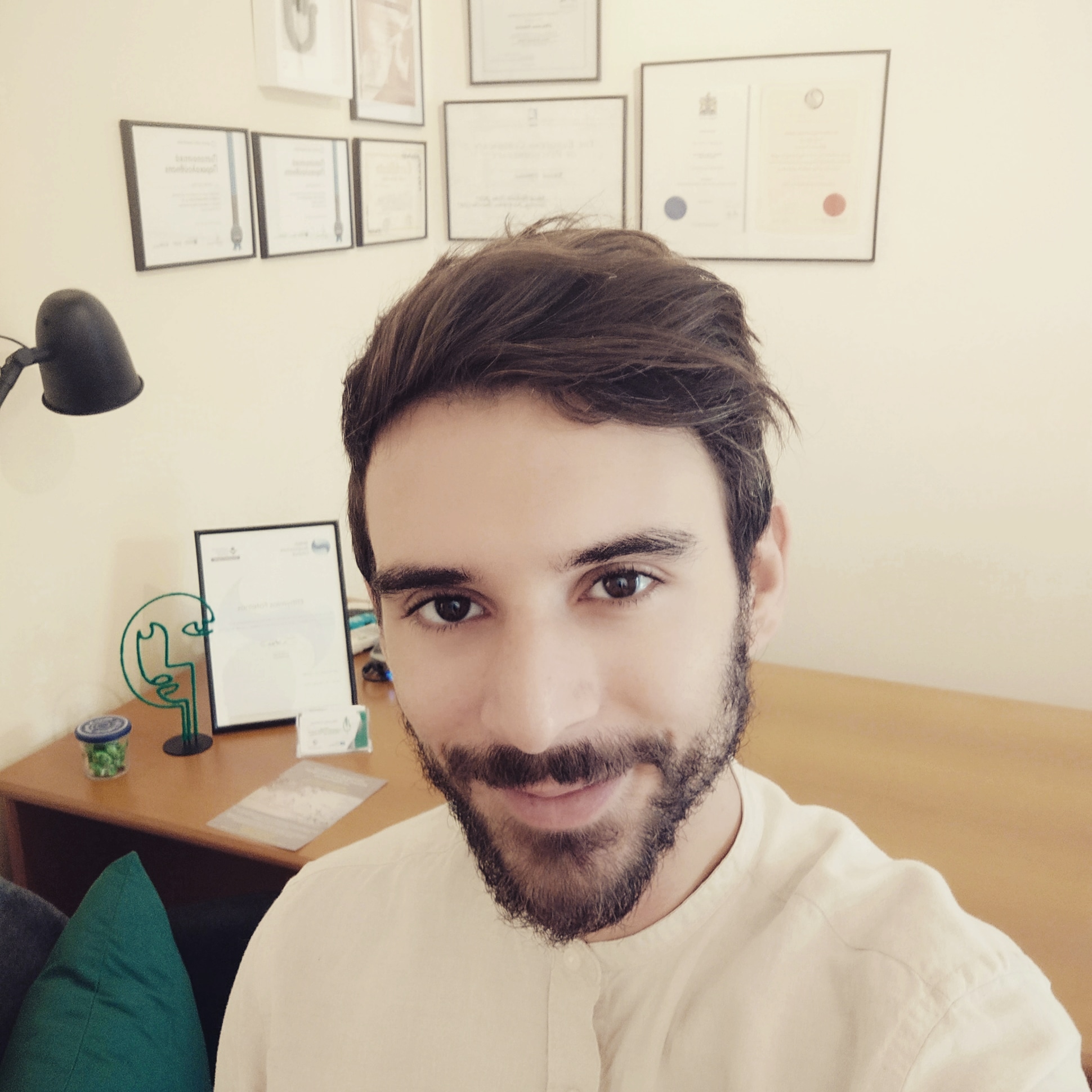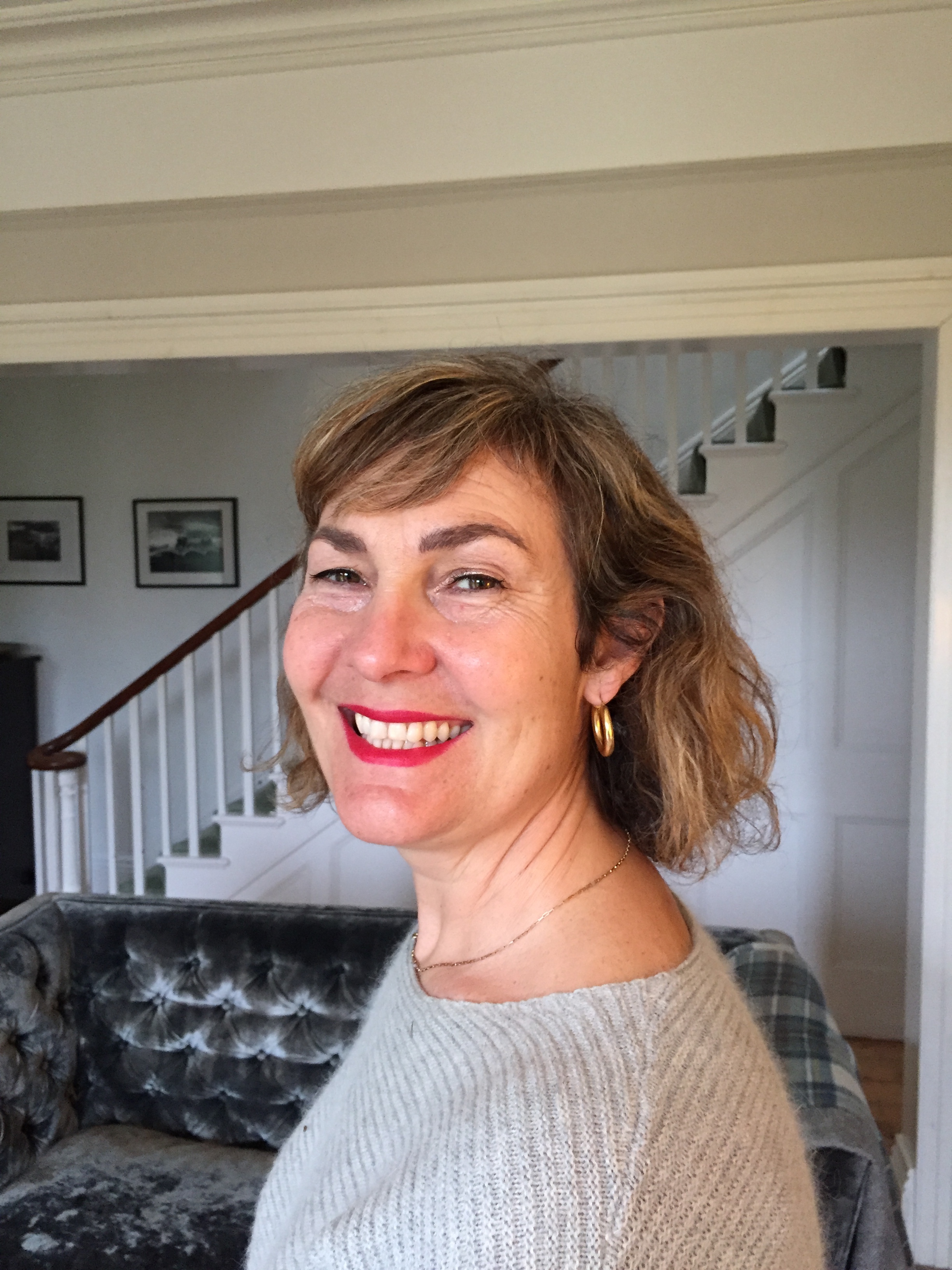A feasibility study of acupuncture for the treatment of children with autism spectrum disorder
Jonathan Pledger
European Journal of Oriental Medicine, Vol.7 No.5 (2014)
First published 2014
Autistic Spectrum Disorder (ASD) impacts on every aspect of a child’s life and the number diagnosed with this lifelong condition is growing. Few studies have researched acupuncture and ASD. This study uses an integrated Traditional Chinese Medicine (TCM) and Five Element style of acupuncture and differential diagnosis with individualised treatments.
Design
Fourteen participants, aged 9-16 years diagnosed with ASD and attending a residential school in the UK for children with ASD, were allocated into two groups and received weekly term-time treatments over a ten-month period. The first group (n=7) received treatment between 28th September 2012 and 28th February 2013. The second group (n=7), a delayed control group, commenced treatment from 1st March 2013 until 12th July 2013.
Outcome measures
Parents assessed improvements in social behaviour using The Social Skills Profile questionnaire. At the end of the course of treatments a telephone interview was conducted to obtain qualitative data.
Teachers assessed language development using The Pragmatics Profile questionnaire.
Results
Thirteen parents reported an improvement in some aspect of their child’s behaviour or wellbeing. The teacher questionnaire suggested no improvement in behaviour, while the parent questionnaire reported a statistically significant improvement in behaviour before and after treatment.
Introduction
Autism spectrum disorders (ASDs) are developmental disorders which have four core characteristics: communication and social impairment, irritability, repetitive behaviour and limited range of interests (Nightingale, 2012). There is a wide variance in the type and severity of autism. It affects between 1 in 100 to 150 children and its prevalence is growing (Olivié, 2012). Guidelines for children with ASD (NICE, 2011) outline the differential diagnoses and include: neurodevelopmental impairment, mental and behavioural disorders.
Medication is used to help support children with autism, however the adverse reactions to drugs has led to the increasing popularity of complementary treatments for autism (Rimland & Baker, 1996). Behavioural therapy is also used to treat autism. One study (Schreibman, 2000) found that behavioural therapy is the most effective treatment for autism and recognises that there is no established protocol for treating autism and that individualised treatments are needed.
Most of the previous research studies were conducted in China and four out of the seven studies used scalp or tongue points (Allam, Eldine & Helmy, 2008; Wong & Sun, 2010; Chen & Wong 2008; and Wong & Chen 2010), four used electroacupuncture (Wong & Sun, 2010; Chen & Wong, 2008; Wong & Chen, 2010; and Jia, Sun & Fan, 2008), one used a seven star hammer (Chan et al, 2009), and another used acupuncture as part of a course of rehabilitation and sensory treatments (Yan et al, 2007).
It is the belief of the author that the location of some of these points would not be well tolerated by the children, accepted by parents or even recognised by many acupuncturists in the UK. For example, one study used Yamamoto points, for pain and motor impairments (Allam, Eldine & Helmy, 2008).
All research looking into the effects of acupuncture and ASD used a prescriptive and predetermined set of points for every child in the study. Treatments from previous research were conducted several times a week; some up to five treatments a week (Wong & Sun 2010 and Chan et al, 2009). From the author’s previous clinical experience weekly treatments are more realistic as work in the UK, schooling and other commitments make more frequent treatments unsustainable.
A Cochrane systematic review (Cheuk et al, 2011) reported some improvements in cognition, self-care, speech, social functioning and general health when acupuncture treatment was received alongside conventional treatment, recommending recruiting participants from similar institutions to minimise the effects these may have on individual children.
The research set out in this paper used body acupuncture and weekly treatments based on an individual diagnosis using an integrated TCM-Five Element style for each child, depending on their own specific symptoms rather than as having a generic condition. The study was conducted in one institute to minimise the variations in treatments and other inputs the children receive. Furthermore, this appears to be the only study to establish a differential diagnosis of ASD from a Chinese Medicine perspective.
Research question
Is it feasible to provide acupuncture as a treatment for children with autism?
The research aimed to discover how autistic children would feel about having acupuncture and whether they would feel comfortable receiving acupuncture. Given that anxiety and heightened sensory sensitivity can be a feature for some children with ASD the experience may either invoke a strong fear making needling difficult if not impossible or that the experience would be too painful that they would not wish to continue to have treatment.
What benefits might there be for children and their carers?
Would there be any discernible improvements for the children in terms of either neurodevelopmental or behavioural improvements and would any improvements be discerned by carers at the school or their parents?
Aims and objectives
- To determine the acceptability of acupuncture treatment to children with autism, their parents and teachers in a residential school setting.
- To explore a workable acupuncture treatment management.
- To gather preliminary outcomes data.
Materials and Methods
Study design and recruitment of participants
This pilot control trial took place at a specialist residential school for children with ASD in East Sussex, UK. The trial took place between September 2012 and July 2013. Participants were diagnosed using both Traditional Chinese Medicine (TCM) and Five Element principles.
Sixteen children (aged 9-16 years) accepted the invitation to participate. There were no exclusion criteria. Two students withdrew. The remaining 14 students (see Figure 1) were allocated into two groups. Both groups received weekly term-time treatments. The first group (n=7) received treatment between 28th September 2012 and 28th February 2013, totalling a maximum of 14 possible sessions. The second group (n=7), a delayed control group, commenced treatment from 1st March 2013 until 12th July 2013, with a maximum of 15 possible treatments. The exact number of treatments each individual received, along with treatment principles and typical points used are presented in Table 1.
Intervention
All diagnoses and treatments were undertaken by a single acupuncturist and the author of this study. The practitioner has six years experience, is fully qualified and registered with the British Acupuncture Council (BAcC). Acupuncture treatments were based on traditional diagnoses according to a Traditional Chinese Medicine (TCM) and Five Element integrated approach.
Appointments were 30 minutes in duration and parents were asked to attend the first appointment. The first four sessions consisted of massage and acupressure (pressing points with fingers, pressing with a metal probe, and progressing on to stimulating the point with the back of the needle) in order for the children to become accustomed to the practitioner and to the process. Needles were used from the fifth session depending on each participant’s acceptance of needles. Needles were inserted to a depth of approximately 0.3-0.5 cun until de qi was gained and manually stimulated as appropriate. Seirin 0.16x15mm needles were used for all children except participants 4, 6 and 11 who had Aculine needles 0.18x25mm needles because they were older and had a larger frame. The depth for all children depended on point location and sensitivity of the child. Needles were retained for up to 20 minutes for the older and more compliant children (participants 2, 4, 6, 7, 8, 11, 12, 13) and only once they were comfortable with treatment and were able to lie still for that length of time. For the remaining participants needles were not retained.
Outcome measures
Prior to the first appointment, parents completed an initial questionnaire and every three months completed The Social Skills Profile (Bellini & Hopf, 2007) which assesses improvements in social behaviour of children with ASD. At the end of the course of treatments, a telephone interview was conducted with a parent to explore wider issues other than just social behaviour and to follow up any key signs and/or symptoms discussed at the initial consultation. Every three months class teachers also completed a questionnaire, The Pragmatics Profile (Semel et al, n.d.), for children receiving acupuncture. This questionnaire was established within the school prior to research and is a measure of language development.
Data analysis
The scores from both questionnaires throughout the year were totalled. Wilcoxon matched pairs test was applied to identify any significant change before and after treatment.
Ethics
The study was approved by Portsmouth University Ethics Committee.
Results
There were no exclusion criteria as any of the 46 students (aged 8-19years) who attended the school were eligible to participate. Sixteen parents and children accepted the invitation to participate, however one later withdrew as they were not able to attend any of the initial consultation appointments offered and another pupil left the school.
Table 1 states the TCM and Five Element diagnoses made for each patient and summarises the treatments they received.
Table 1: Summary of diagnosis and treatment
| Patient | TCM diagnosis |
Five Element diagnosis |
Treatment principle |
No. of treatments received |
Points used | Mean no. of insertions per session (range) |
|---|---|---|---|---|---|---|
| 1 | Kidney yang deficient | Water | Tonify Kidney yang Treat Water CF |
14 | Moxa: yong quan (Ki 1) Moxa: tai xi (Ki 3) Moxa: shen shu (Bl 23) |
0 (0-1) |
| 2 | Shen disturbance Spleen yang xu and Damp and Phlegm |
Fire | Treat Fire CF Resolve Damp |
14 | shen men (Ht 7) nei quan (P 6) feng long (St 40) tai xi (Ki 3) |
5.8 (0-11) |
| 3 | Shen disturbance Liver qi stagnation Heart Blood xu |
Fire | Treat Fire CF | 13 | Massage Kidney channel in lower leg tong li (Ht 5) shen men (Ht 7) nei quan (P 6) |
1.6 (0-4) |
| 4 | Heat in the Heart yin xu |
Fire | Treat Fire CF Nourish yin |
13 | jiu wei (Ren 15) guan yuan (Ren 4) tian chi (P 1) tian you (TH 16) |
3.8 (0-8) |
| 5 | Phlegm misting the mind |
Metal | Resolve Phlegm | 13 | Massage & brushing Heart channel in forearm and hand feng long (St 40) |
0.4 (0-1) |
| 6 | Damp Liver qi Stagnation Spleen qi xu Heart yin xu |
Water | Resolve Damp Smooth Liver qi stagnation Treat Water CF |
11 | yin ling quan (Sp 9) yang ling quan (GB 34) Moxa: tai xi (Ki 3), Moxa: shen shu (Bl 23) |
4.3 (0-10) |
| 7 | Liver qi stagnation Liver yang Rising Kidney xu |
Wood | Treat Wood CF | 9 | Massage Gall Bladder in leg Massage on back shu points tai chong (Liv 3) yang ling quan (GB 34) Moxa: tai xi (Ki 3) |
1.1 (0-3) |
| 8 | Damp Heat in Lower jiao Liver qi stagnation Fire CF |
Fire | Clear Damp Heat in Lower jiao Treat Fire CF |
15 | yin ling quan (Sp 9) nei guan (P 6) wai guan (TH 5) nei ting (St 44) jiu wei (Ren 15) |
4.1 (0-10) |
| 9 | Phlegm misting the mind Kidney yin xu |
Wood | Resolve Phlegm | 15 | Massage Gall Bladder channel Massage Kidney in lower legs and feet feng long (St 40) Brushing hands and finger tips |
0.5 (0-2) |
| 10 | Liver qi Stagnation | Metal | Treat Metal CF | 12 | tai yuan (Lu 9) | 1.2 (0-3) |
| 11 | Phlegm Blood xu |
Metal | Resolve Phlegm Nourish Blood Treat Metal CF |
13 | jian shi (P 5) feng long (St 40) geshu (Bl 17) pishu (Bl 20) tianfu (Lu 3) futu (LI 18) |
6.5 (0-14) |
| 12 | Damp Liver qi Stagnation |
Fire | Resolve Damp Smooth Liver qi stagnation Treat Fire CF |
15 | yin ling quan (Sp 9) tai chong (Liv 3) nei guan (P 6) wai guan (TB 5) |
5.2 (0-8) |
| 13 | Phlegm misting the mind Qi and Blood Deficient |
Fire | Resolve phlegm Treat Fire CF |
14 | wai guan (TB 5) feng long (St 40) guan yuan (Ren 4) Moxa: between ju que (Ren 14) and zhong ji (Ren 3) |
5.4 (0-12) |
| 14 | Liver qi Stagnation | Fire | Treat Fire CF | 7 | Massage Percardium and Heart channels in arms and Kidney channel in lower leg and feet shen men (Ht 7) |
0.4 (0-2) |
Table 1: Summary of diagnoses and treatments
Half the patients were diagnosed as Fire Constitutional Factors (CF), three as Metal CFs, two Water and two Wood CFs. Four patients had a TCM diagnosis of Phlegm and another four had Damp. The other Full conditions were Liver qi stagnation (n=7) and Heat (n=2). The Empty conditions Corresponded to the patient’s CF, although one patient was generally Blood deficient.
All patients for the first four treatments received massage or acupressure instead of acupuncture, the maximum number of needles used in any treatment was 14. The mean for all the patients is 2.9 needles per treatment.
Wilcoxon matched pairs test was used to compare the scores before and after treatment using data from the Social Skills Profile W= 15.5 (n=13) p≤ 0.05, Wcritical = 17, there is a significant improvement after treatment.
There has been no significant difference in the data from the Social Skills Profile after five months W= 9, n=7 p≤ 0.05, Wcritical = 2.
Comparing the scores before and after treatment using data from the Pragmatics Profile there is no significant improvement W=46.5 (n=14) p≤ 0.05 Wcritical = 21.
The scores from the parents in the Social Skills Profile and the Pragmatics Profile showed no correlation, an increase in a patient from one questionnaire was not necessarily reflected by an improvement from the other questionnaire. There has also been no significant difference in the data from the Pragmatics Profile five months W= 10, n=7 p≤ 0.05, Wcritical = 2.
Parents were asked to fill in a questionnaire and then interviewed prior to treatment. The comments in Appendix 1 were gathered from parents during a telephone interview straight after the course of treatments and from the final questionnaire. For the first seven children, there are also comments five months after treatment had finished, again during a telephone interview with parents. Where teacher or pupil comments were available these are also included. Parents took part in a telephone interview immediately following the course of treatments and, for children 1-7, five months after treatment. These along with comments on the final questionnaire are included in Table 2. Thirteen of the parents reported some improvement in the children’s behaviour ranging from being less angry, exhibiting less repetitive behaviour and being more calm and relaxed, to being dry at night or no longer wearing a nappy. Only one parent reported no difference in the course of treatment. This pupil only received a total of seven treatments and because the treatments were so irregular, the familiarity of treatment and of the acupuncturist had to be built up again between treatments and so the child only received needles on two occasions, the first time two needles and the second time just one, the rest of the treatments consisted of massage or acupressure.
Table 2: Summary of reported benefits
| Condition Improved | Patient Number | Comments |
|---|---|---|
| Calm & relaxed |
1,3,4,8,9,12 | “It’s made a difference to my sleep patterns and made me feel really, really relaxed. Thank you.” “He is relaxed and calm in his self.” “At Christmas he is like a coiled spring, usually very high, but this Christmas he is just normally high.” “Acupuncture helps me. It makes me calmer. People don’t annoy me so much.” “He has certainly been more relaxed and calm.” |
| Sleep | 1,6,9 | “Improved his sleep.” “I get off to sleep ok. No more nightmares.” “He has been calmer all week and sleeping better.” |
| Anxiety | 1,5 | “He exhibits fear and anxiety in social situations less now.” “His anxiety has definitely decreased.” |
| Hygiene | 1,10,11 | “Teeth cleaning has improved and he can shower in a shorter time now.” Personal hygiene has improved “more so now, wipes his bottom frequently”. “For the last four or five months he hasn’t wee’d at night.” |
| Social behaviour | 2,5,9,10,11,13 | “Very chatty today and very focused. He comes to us and gives us a cuddle. He never really did this before.” “Less touching the floor and repetitive behaviour. He used to always do it during meal times, he used to find them very stressful.” “Yesterday he initiated interaction with a child for the first time and wanted to interact.” “Much more sociable.” “He now makes good eye contact during conversations, when only a little eye contact was made before acupuncture.” “More give and take.” “It has definitely helped his behaviour. Up until two weeks ago (one week after treatment had finished) the tapping came back.” |
| Communication & language | 2,3,11,12 | “In the last few weeks his language has really come on.. so chatty and really enthusiastic. His speech and language is also seeing progress.” “His language has gotten better too.” “Definitely talking more, socially mixing more with his peer group.” |
| Weight | 2 | “BMI has fallen from 28.26 in January to 27.18 in May.” |
| Eczema | 4 | “His eczema has improved considerably since treatment.” |
| Anger | 3,6,7 | “Acupuncture has helped to regulate his behaviour, he knows when he is going to fly off the handle.” “I’m worried when acupuncture stops I might go back to my old ways, angry and hyper.” “His self esteem is better, his anger is definitely better and he handles things really well. His anger has improved 40 to 50 per cent.” |
| General | 9,13 | “Amazing! Especially considering what he was like 15 minutes ago … on the trip to Legoland he was excellent.” “He said it makes his body feel better.” |
There were no reported incidences of harm caused by treatment.
Discussion
This study suggests that acupuncture is a feasible treatment for children with ASD. Children and their parents reported a variety of benefits including feeling more relaxed, less anxious, less angry as well as improvements in social behaviour, all of which are common challenges that autistic children face.
The majority of children were happy to receive acupuncture, provided they received support and plenty of preparation and reassurance; explaining what was happening throughout the process. The benefits were far reaching and were discernible by parents and carers. Autism is an individual condition, affecting everyone in very different ways. Acupuncture treats individual symptoms and can be tailored to effectively support and treat each individual autistic child.
Eight of the fourteen children were unable to communicate verbally, except in some cases using the occasional word. Of the six that could communicate, only three children could articulate how they felt. In addition, parents only gave their feedback at the end of five months of treatment. Three children had teachers that attended each treatment. This was the only time that regular feedback was received. Regular, preferably weekly, feedback with parents or teachers would have been useful to inform the next treatment and would be a recommendation for future research.
Seven of the children (50%) were a Fire Constitutional Factor (CF). It is possible that this high percentage was because parents thought that they would enjoy the social contact with the acupuncturist and therefore there was an element of self selection for the ‘type’ of pupil that came for treatment.
Information from the Social Skills Profile gathered from the parents, suggesting that treatment had made a positive impact on their social behaviour. There was however, no difference five months after treating, suggesting that regular treatment is needed to maintain its efficacy. Treatments over a longer period of time may be required to give a longer lasting effect. It may be possible to establish this connection, between a longer course of treatment and its long-term effects, in any future research, with treatments lasting for 12 months or more. There was no noted improvement reflected in the Pragmatics Profile, completed by teachers, which is a questionnaire designed to assess the development of communication in children ages 9-16.
Validity of questionnaires
Many parents found the Social Skills Profile difficult to complete because either the questions did not seem ‘relevant’ for their child or they just did not know the answer. One parent reported, “I don’t think the questionnaire reflects the progress we’ve seen with him”. Hence the questionnaire may have elicited even more positive results if it could cover more areas other than just social behaviour, but because ASD is so individual, treatment and assessment needs also to be very individual and specific to each child. Parents reported that acupuncture helped with a variety of conditions (see Table 5). The condition is specific to each child, while the questionnaires are generic.
A review (Fernandopulle, 2011) of four autistic measures of social interaction found that no one measure can assess the range of differences found in autism. Measuring changes in autism is raught with difficulties. The measurements, whether through observation or questionnaires, are subjective and because of the huge variation in the symptoms, the ability of one measure to accurately capture any improvement can be limited. The lack of reliability of measuring changes particularly in social interaction is one of the main challenges autistic children face (Cunningham, 2010).
The Pragmatics Profile was completed by the classroom teacher, rather than a member of the residential staff who might have seen a different view to a child’s response to treatment. While each class has a main classroom teacher, there are a number of assistants. Some children have a ‘one-to-one’, a member of staff assigned to a particular child, other children may be assisted by more than one teacher. It may have been the case that a questionnaire was filled out by a different member of staff before and after treatment, either the classroom teacher or a classroom assistant. This lack of consistency means that the subjective assessments of a child may vary from one assessment to the next. Therefore there may be a lack of standardisation of the scores given and this will affect the accuracy and validity of the questionnaires. Future research could give the same questionnaire to both parents and teachers to improve the reliability of the results.
An autistic child’s behaviour on a particular day may not be a true reflection of their general behaviour. A literature review of 67 reports looking at measuring changes in the social behaviour of autistic children (Fisch, 2012) found that assessments attempt to standardise behaviour which can change with different stimuli and in different contexts, but they are not always normreferenced and can vary in reliability depending on, for example, the severity of autism and age. The ratings of the scales used can be very subjective, some tests are more appropriate for different ages as a child’s autistic characteristics change. What might be considered socially acceptable behaviour at pre-school may not be appropriate for teenagers, consequently different tests may be more appropriate. One measure of social interaction, the social responsiveness scale (SRS) cannot be used across a broad age range as first indicated (Duku et al, 2013).
Reflections of treating children with ASD
Is it feasible to provide acupuncture as a treatment for children with autism? At first, most of the children were cautious towards the practitioner and to treatment. They did not relax and while most cooperated and laid down on the couch when asked, they almost certainly would not have accepted needles initially. A lot of time was spent talking to the children about what to expect, before and during treatment as well as after the treatment explaining briefly what to expect for the next treatment. Treatments were progressive. The first session, after gathering information from parents and taking pulses and looking at tongues, usually included a ten-minute massage, and if they were comfortable the first treatment would end with acupressure applied to relevant points based on the diagnosis. The second treatment was an extension of the first with massage, more static acupressure and, again if they were comfortable, a probe was used to gently press the points. By the third treatment, most children had massage and acupressure with a probe, moxibustion if appropriate, and for half the children they were shown in this treatment the back of the needle – a plastic red handle – which was then pressed on certain points. During either the third or fourth treatment 11 children received ‘pseudo-needling’. The needle was held at the very tip and the practitioner’s fingers pressed against the child’s skin. The child thought that they were receiving acupuncture, but in fact there was no insertion, just pressure from the practitioner’s fingers. It was a way to reassure the children about the needles. During the following treatment the same procedure was repeated with no insertion taking place for the first acupuncture point. For the second acupuncture point, with the pressure of the acupuncturist’s fingers pressing on the skin as before, the needle was then inserted. This procedure relaxed children sufficiently to accept the needles, knowing that they would not hurt. They were then able to tolerate a number of needles, lie on the couch for up to 20 minutes and to comfortably look at the needles. One child even suggested where he would like the needles to go, because he wanted to know what they would feel like in different places.
Regular treatments were also extremely important to maintain rapport and to maintain a momentum to the treatments. After the Christmas or Easter holidays, half-terms or if an appointment was missed, the children were always slightly less relaxed about treatment than they were before the break and the longer the break, the less relaxed they were. This resulted in fewer needles being used and retained for less time. This was more noticeable if two or more consecutive weeks were missed.
One of the objectives of this research was to determine the acceptability of acupuncture treatment to children with ASD. Eight of the fourteen children were, after four treatments, perfectly comfortable with receiving acupuncture. Needles could be retained for the appropriate time (in some cases up to 20 minutes) and a number of needles used (up to 12 insertions in one treatment). Four of the remaining six children were not immediately comfortable with acupuncture and it took longer for them to accept the needles, consequently the needles were not retained and usually only one or two needles were inserted. The final two children were not comfortable with needles, one was happy to receive moxibustion, while the other was not happy to receive either needles or moxibustion and only massage and acupressure were used, however this child only received seven treatments throughout the five months and therefore treatments had not built up a momentum and she felt less relaxed with so many treatments missed.
Limitations of this study and future work
One of the main limitations of this study is the sample size. A larger sample would have improved the reliability of the outcomes. However, this was designed as a pilot study to explore the feasibility of acupuncture as a method of treating children with ASD. This study suggests acupuncture is a feasible method of treating children with ASD and therefore future work could explore individual acupuncture treatments to a larger number of children.
The allocation of children into two groups was not random, they were allocated on a first come, first served basis. It was organised in this way for practical reasons. There were a limited number of responses and a lack of certainty of how many children would respond. Once there were seven children it was enough to ensure the research would go ahead and the parents were informed. They may not have waited and left the study if they were required to wait too long. In a larger study with more children, the groups could be randomly allocated, reducing any selection bias. It could be argued that the first parents to respond were more keen for their children to receive acupuncture and assessed any improvements differently, however there did not appear to be any differences in their responses compared to the delayed control group.
Wilcoxon matched pair test was used to analyse the quantitative data, this is because the small sample size meant the data was non-parametric. With a larger sample with normal distribution a ‘t’ test could be used. The small sample size means that the data is less reliable than with larger numbers. Future research could therefore aim to recruit more children with ASD, perhaps with a number of acupuncturists treating in a number of different specialist schools. This would increase numbers and therefore increase the reliability and validity of the data gathered.
Another limitation of this study was that parents and carers knew who was receiving acupuncture and a method of blinding them would improve the reliability of the results. Involving specialists, for example, speech and learning therapists, who are also blinded, would also help improve the reliability of the assessments. Future studies should treat individuals for a year or more as this would ensure improvements in autistic characteristics are more noticeable and also to allow the methods of monitoring these changes, which are broadly subjective, an opportunity to detect, amongst other criteria, behavioural changes.
What benefits might there be for children and their carers?
Parents, and children where possible, have reported a wide range of benefits specific to their needs. Children reported feeling calmer and more relaxed, while parents noticed changes in behaviour. Furthermore, some carers provided feedback and they reported a range of social improvements while receiving a course of treatment or shortly after the course had finished. Thirty-five per cent of parents and children were prepared to try acupuncture. It would have been interesting to talk to the remaining 65 per cent to find out why they did not want to take part and to understand any reservations they may have had.
Conclusion
The results showed that the Social Skills Profile completed by parents indicated a statistically significant improved behaviour change after acupuncture treatment, supported by the parental interviews after treatment. There was no improvement in the Pragmatics Profile collected from teachers, although their qualitative comments gathered, where possible, were positive. The children were generally comfortable receiving acupuncture, although thorough, appropriate explanation and regular treatments are needed to reassure children throughout the process and to establish familiarity with the acupuncturist and the treatment. Pupils were more comfortable with treatments and more compliant if the treatments were regular.
Further research using larger numbers of children would be useful with a greater involvement with a number of potential assessors, parents, teachers and other therapists for example, psychologists and speech and learning therapists.
Appendix
Appendix 1: Comments from parents, teachers and pupils about treatment
Patient 1
After treatment
Patient said at the end of the course of treatments and unprompted: “It’s made a difference to my sleep patterns and made me feel really, really relaxed. Thank you.”
Parents said acupuncture “improved his sleep”.
After six months
Parents said that he “exhibits fear and anxiety in social situations less now. Teeth cleaning has improved and he can shower in a shorter time now.”
Patient 2
After treatment
His speech therapist who saw him on the same day, after acupuncture, commented that he was “very chatty today and very focused”.
Parents said: “In the last few weeks his language has really come on. He is a very unresponsive child and never had a problem receiving cuddles, but is now seeking them and comes to us and gives us a cuddle. If we are sat on the sofa he might come and rest his head on us. He never really did this before. He goes to a social skills group (since 19th February) and is so chatty there and really enthusiastic.”
After six months
Parents said: “He has continued to cuddle and has made steady progress. His speech and language is also seeing progress. He has lost weight, his BMI has fallen from 28.26 in January to 27.18 in May. He has started to say people are pretty. He enjoyed having acupuncture.”
Patient 3
After treatment
Parents said: “Acupuncture has helped to regulate his behaviour, he knows when he is going to fly off the handle and can do relaxing as part of this. He is relaxed and calm in his self. His language has gotten better too.”
After six months
Parents said: “Acupuncture was very helpful as part of his relaxation. He has recently come off his epilepsy medication and so his behaviour has changed and he is difficult to predict”.
Patient 4
After treatment
Parents said: “His eczema is slightly better. It was a positive experience. Absolutely thoroughly enjoyed it, asking ‘when will I be having acupuncture?’ He seems a bit calmer. At Christmas he is like a coiled spring, usually very high, but this Christmas he is just normally high. He loves coming to you.”
After six months
Parents said: “His eczema has improved considerably since treatment. He had a big patch and lots of little ones for quite some time. No matter how much cream the weals were there. But they’re not there anymore.”
Patient 5
After treatment
Parents said: “His anxiety has definitely decreased. Less touching the floor and repetitive behaviour. I noticed him doing it during dinner recently and realised he hasn’t been doing it. He used to always do it during meal times, he used to find them very stressful.”
After six months
Parents said: “He has continued to be less anxious. Looking back he went through a really difficult time, acupuncture was helpful and helped him manage his anxiety.”
Patient 6
After treatment
Parents said: “He said it calmed him, but I see no difference, he wants for me to see him as positive. I’m sure there are some improvements, he was better but it’s the whole anxiety and aggressiveness. He is hormonal. He enjoyed acupuncture.”
The pupil said (December 2012): “I’m worried when acupuncture stops I might go back to my old ways, angry and hyper.”
Pupil said (February 2013): “I get off to sleep ok. No more nightmares. Don’t have a taste in my mouth anymore.”
After six months
Parents said: “He is not calm at all. He is tense and uptight and in trouble in class all the time. Don’t think anything will calm him – nothing is working. He is using offensive language.”
Patient 7
After treatment
Parent said: “He has a needle phobia, I didn’t think you would get one needle in. It was relaxing and he really enjoyed it and looked forward to it. It helped with his anger. He has had conflicts with friends and he dealt with it really well. His self esteem is better, his anger is definitely better and he handles things really well. His anger has improved 40 to 50 per cent. He broke his iPad, usually he would have gone off his rocker, but he was not at all bothered. He was without it for two weeks and then there was an extra delay of a week to get it fixed and he would normally have a big strop on, but said ‘fine’.” “His headphones broke and he was upset but not as upset as usual. We went to the shop to buy another and the assistant said there was none in stock, usually he would have sworn at the assistant and had a tantrum, but he didn’t say anything.”
After six months
Parent said that there had been “no change. Not too bad with breaking things, but still loses his patience with people.”
Patient 8
After treatment
Pupil said (7th June 2013): “Acupuncture helps me. It makes me calmer. People don’t annoy me so much. Well they still elbow me, but it doesn’t bother me.”
Parents said: “It’s difficult to know how he benefitted from acupuncture because he was at school when he had treatment, but he really enjoyed having acupuncture, he was very positive about it. He has certainly been more relaxed and calm and enjoying school since having treatment.”
Patient 9
After treatment
Parents said: “It’s hard to say whether there has been an improvement. He has difficult behaviour that comes in waves.”
Teacher (who attended every treatment) said (22nd March 2013) after treatment: “That was excellent. When he was massaged before in this room he’s been bouncing off the wall and been more stressed than when he went in.”
Teacher said (9th April 2013): “Amazing! Especially considering what he was like 15 minutes ago” (before coming into the room).
Teacher said: (26th April 2013) “He was very calm last week. Happy. He could put on his skates and arm pads and was very happy, usually he is frustrated. Osteopath had said that he was happier and calmer than he had ever seen him.”
Teacher said (3rd May 2013): “He has been calmer all week and sleeping better. Calmer in residential, he had been a nightmare. When he does blow up he has calmed down quicker and is easier to talk to.”
Teacher said (21st June 2013): “Yesterday he initiated interaction with a child for the first time and wanted to interact.”
Teacher said (28th June 2013): “He went on a school trip to a farm. He was very controlled, not running through electric doors. Animals are not his thing, but he listened and went round with everyone. He continues to initiate social interaction.”
Teacher said (12th July 2013): “He received a ‘best friends’ award for taking it in turns on the zip wire. He won a ball as a reward and shared that. On the trip to Legoland he was excellent.”
Patient 10
After treatment
Parents said: “I don’t think the questionnaire reflects the progress we’ve seen with him since he started school and the course of acupuncture (I expect it’s a combination of the two that’s helped) – we were in Center Parcs, with family and they all commented on how much more sociable he is especially with me and his father. He is also less rigid and easier to persuade to try something new. He was very happy in himself and could communicate very well what he wanted. Although it is hard to judge whether it was due to the acupuncture, he has progressed massively.” “He joins in with others and takes turns slightly more frequently.” “He now makes good eye contact during conversations, when only a little eye contact was made before acupuncture.” Personal hygiene has improved “more so now, wipes his bottom frequently”.
Patient 11
After treatment
Parents said: “He has definitely benefitted in most cases. Definitely talking more, socially mixing more with his peer group. His brother is back from university and there is no frostiness now. For the last four or five months he hasn’t wee’d at night. He is getting better at interacting with peers and at asking questions. An improvement in verbally expressing how he is feeling and getting better at joining in conversations and he does not interrupt.”
Patient 12
After treatment
Parent said: “In general there has been an improvement. More conversation, generally calmer, although he is still bursting through doors. More give and take.”
Patient 13
After treatment
Parents said: “He said it makes his body feel better. He coped really well and is still wanting to have acupuncture. It’s been advantageous and helpful for him. It has definitely helped his behaviour. Up until two weeks ago (this interview was conducted twenty four days after the last treatment) there was no tapping, two weeks ago the tapping came back. He has had a changeable period the last six months and had a difficult time, acupuncture has helped him through that and helped to support his system.”
Patient 14
After treatment
“No difference”
Acknowledgements
This research was part funded by the British Acupuncture Council
References
Allam, H., EIdine, N.G. & Helmy, G. (2008). Scalp acupuncture effect on language development in children with autism: a pilot study. J Altern Complement Med., 14(2), 109-114.
Autism diagnosis in children and young people: Recognition, referral and diagnosis of children and young people on the autism spectrum. National Institute for Health and Clinical Excellence (NICE) (2011). Retrieved from www.publications.nice.org.uk/autism-diagnosis-in-children-and-youngpeople-cg128/introduction (March, 12, 2013).
Bellini, S. & Hopf, A. (2007). The Development of the Autism Social Skills Profile. A Preliminary Analysis of Psychometric Properties. Focus Autism Other Dev Disabl., 22(2), 80-87.
Chan, A.S., Cheung, M.C., Sze, S.L., Leung, W.W. (2009). Seven-star needle stimulation improves language and social interaction of children with autistic spectrum disorders. Am J Chin Med., 37(3), 495-504.
Chen, W.X., Wu-Li, L. & Wong, V.C. (2008). Electroacupuncture for children with autism spectrum disorder: pilot study of 2 cases. J Altern Complement Med., 14(8),1057-65.
Cheuk, D.K., Wong, V. & Chen, W.X. (2011). Acupuncture for autism spectrum disorders (ASD). Cochrane Database of Systematic Reviews, Issue 9, CD007849.
Cunningham, A. (2012). Measuring change in social interaction skills of young children with autism. J Autism Dev Disord., 42(4), 593-605.
Duku et al. (2013). Investigating the measurement properties of the social responsiveness scale in preschool children with autism spectrum disorders. J Autism Dev Disord., 43(4), 860-68.
Fernandopulle, N. (2011). Measurement of autism: a review of 4 screening measures. Indian J Psychol Med., 33(1), 5-10.
Fisch, G. (2012). Autism and epistemology III: Child development, behavioral stability, and reliability of measurement. Am J Med Genet A., 158A(5), 969-79.
Jia, S.W., Sun, T.T. & Fan, R. (2008). Visualized study on acupuncture treatment of children autism using single photon emission computed tomography. Zhongguo Zhong Xi Yi Jie He Za Zhi. 28(10), 886-9.
Nightingale, S. (2012). Autism Spectrum Disorders. Nat Rev Drug Discov., 11, 745-46.
Olivié, H. (2012). Clinical Practice. The medical care of children with autism. Eur J Pediatr., 171, 741-49.
Rimland, B. & Baker, S. (1996). Brief report: alternative approaches to the development of effective treatments for autism. J Autism Dev Disord., 26(2), 237-41.
Schreibman, L. (2000). Intensive behavioral/psychoeducational treatments for autism: research needs and future directions. J Autism Dev Disord., 30(5), 373-78.
Semel, E., Wiig, E. & Secord, W. (n.d.). Clinical Evaluation of Language Fundamentals 4th. Ed. Record Form 2 P 27-28. Retrieved fromwww.http://visualspeechtherapy.com/_include/images/Other/celf/CELF_Ages_9_21_RecordForm.pdf (August, 25 2013).
Wong, V.C. & Chen, W.X. (2010). Randomized controlled trial of electroacupuncture for autism spectrum disorder. Altern Med Rev., 15(2), 136-46.
Wong, V.C. & Sun, J.G. (2010). Randomized controlled trial of acupuncture versus sham acupuncture in autism spectrum disorder. J Altern Complement Med., 16(5), 545-53.
Yamamoto, T., Schockert, T. & Boroojerdi, B. (2007). Treatment of juvenile stroke using Yamamoto New Scalp Acupuncture (YNSA) – a case report (2007). Acupunct Med., 25(4), 200-202.
Yan, Y.F., Wei, Y.Y., Chen, Y.H., Chen, M.M. (2007). Effect of acupuncture on rehabilitation training of child’s autism. Zhongguo Zhen Jiu., 27(7), 503-5.

